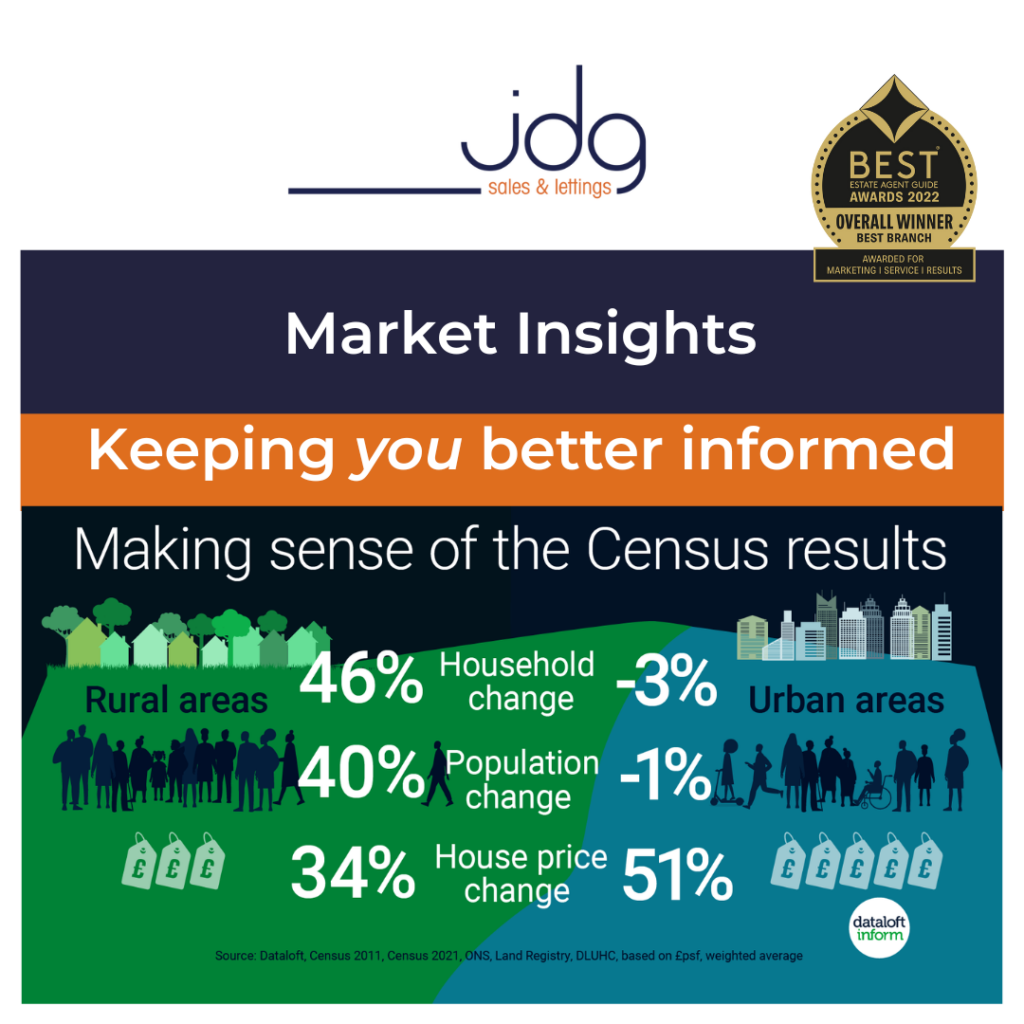
The Census takes place every 10 years. Every UK household is required to take part.
The census asks questions about you, your household and your home. It is the only survey which provides a detailed picture of the entire population.
The first results of the 2021 Census published on June 28th show the population of England and Wales was 6% higher on Census day 2021, compared to Census day 2011. The number of households was also 6% higher.
Over the same period, property prices rose by an average of 39% with urban areas outperforming their rural counterparts.
In the UK, the majority (75%) of people live in urban areas but the rate of population and household growth in rural areas appears to be much higher due to the impact of the COVID-19 lockdown. We must remember at the time of the census, many students and young people returned home and households combined temporarily. This will have boosted the rural population.
In Lancaster, the picture is slightly different. The population has grown by just 3% from 138,375 to 142,900.
The population density in Lancaster now stands at 252 residents per square kilometre. In England as a whole, the population density equals 434 residents per square kilometre. Tower Hamlets in London has 15,695 residents per square kilometre! We are lucky to have so much open space around us.
Here are some facts for you from the 2021 Census Results
- 53,200 people in Lancaster were aged 29 and under
- 29,300 people in Lancaster were aged 65 or older on census day
- Lancaster’s population is now 48.9% male and 51.1% female
- Since 1981, Lancaster’s population has grown by 24,311 people
We look forward to sharing more updates with you as our market research teamwork through them and what they mean for the Lancaster property market!
Thanks for reading
Michelle